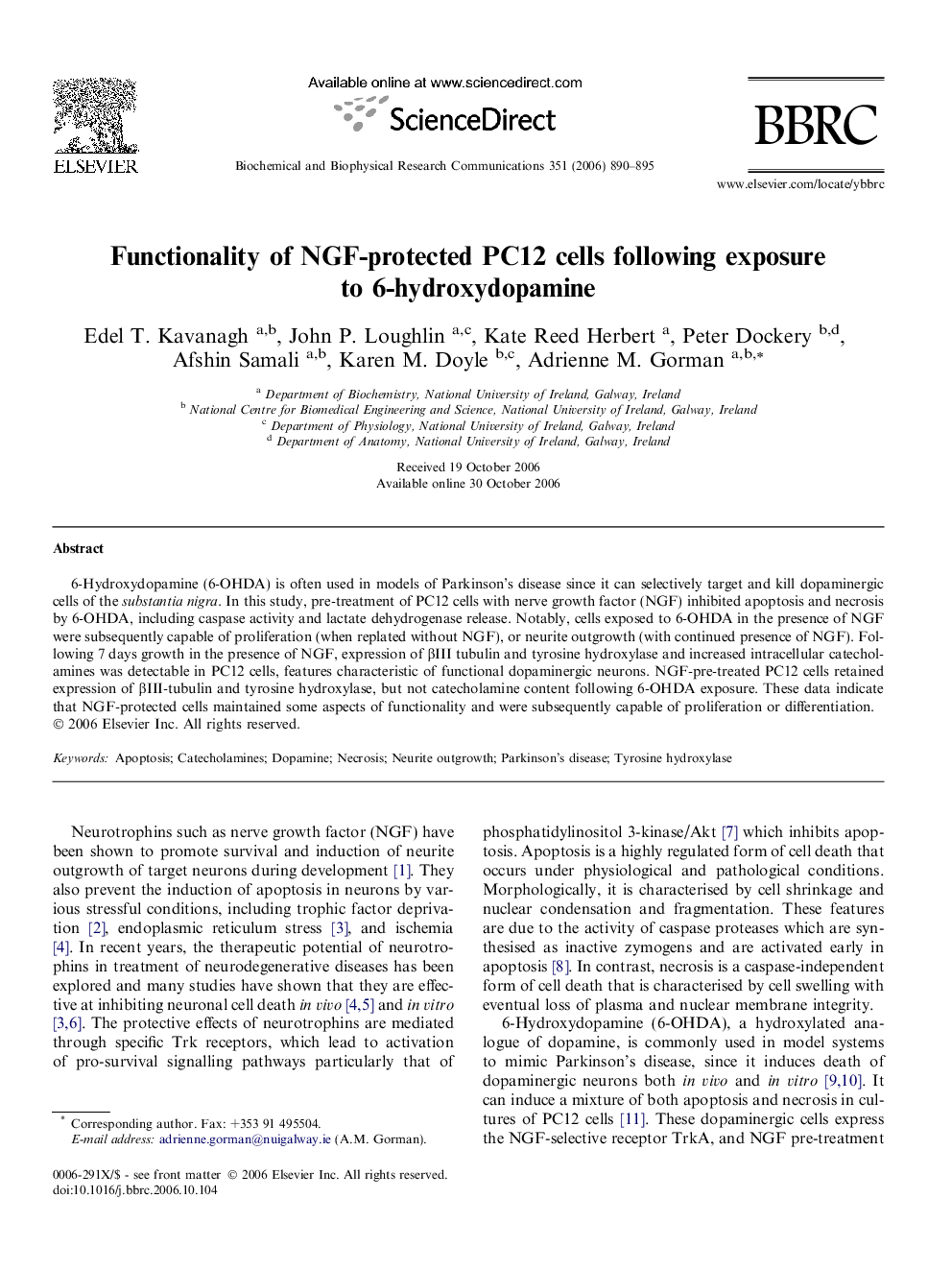| Article ID | Journal | Published Year | Pages | File Type |
|---|---|---|---|---|
| 1938499 | Biochemical and Biophysical Research Communications | 2006 | 6 Pages |
6-Hydroxydopamine (6-OHDA) is often used in models of Parkinson’s disease since it can selectively target and kill dopaminergic cells of the substantia nigra. In this study, pre-treatment of PC12 cells with nerve growth factor (NGF) inhibited apoptosis and necrosis by 6-OHDA, including caspase activity and lactate dehydrogenase release. Notably, cells exposed to 6-OHDA in the presence of NGF were subsequently capable of proliferation (when replated without NGF), or neurite outgrowth (with continued presence of NGF). Following 7 days growth in the presence of NGF, expression of βIII tubulin and tyrosine hydroxylase and increased intracellular catecholamines was detectable in PC12 cells, features characteristic of functional dopaminergic neurons. NGF-pre-treated PC12 cells retained expression of βIII-tubulin and tyrosine hydroxylase, but not catecholamine content following 6-OHDA exposure. These data indicate that NGF-protected cells maintained some aspects of functionality and were subsequently capable of proliferation or differentiation.
